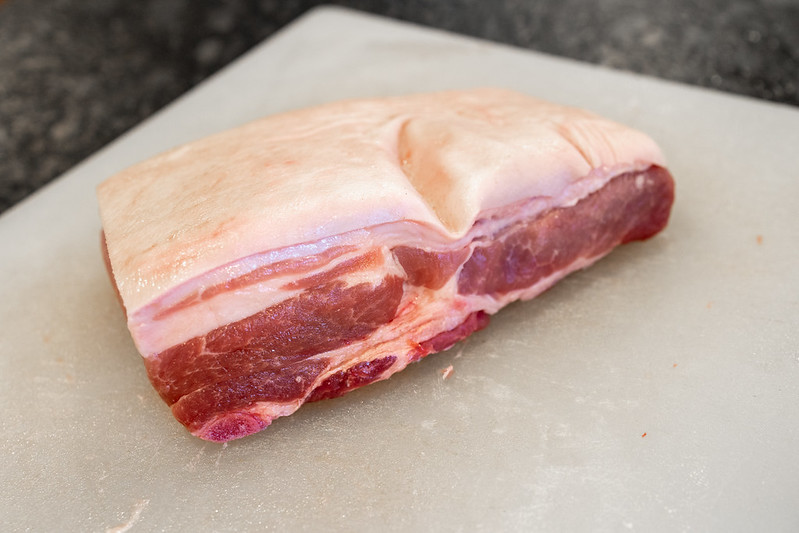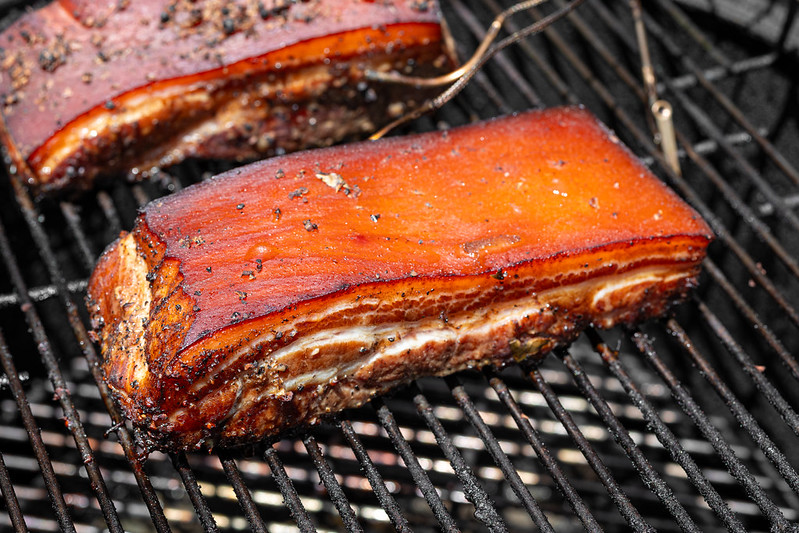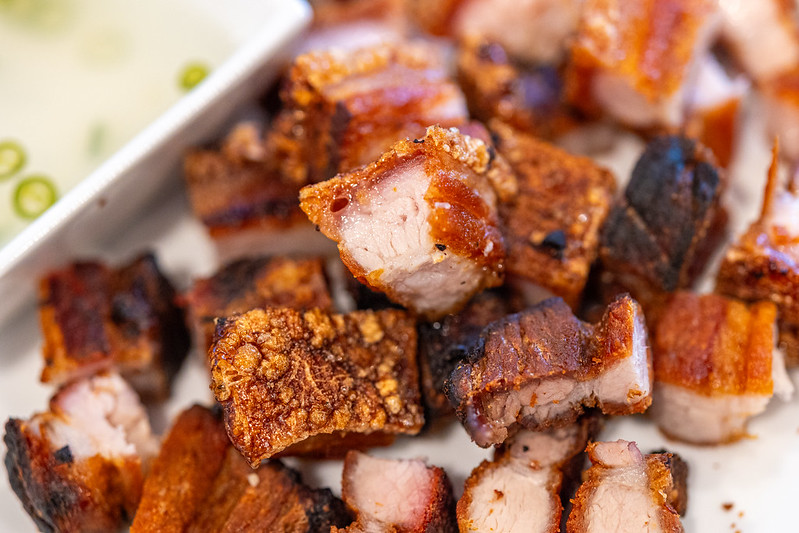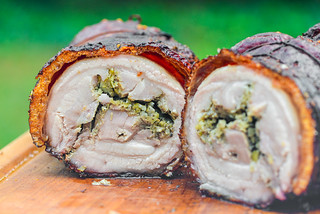Smoked Lechon Kawali
My first gateway food into Filipino cuisine was barbecue, but if memory serves me correctly, it wasn't long until lechon kawali became my second. At the time I started dating my (now) wife, I was a pretty picky and very non-adventurous eater, so anything new was a challenge and taken in baby steps. Barbecue chicken skewers were so familiar that it wasn't really a leap when I ordered them at Filipino restaurant in Woodside, Queens, but I probably would not have even eaten lechon kawali at the time if my mother-in-law had told me it was pork belly when she introduced me to this dish. However, all I saw on the plate that first time was what looked like crispy, delicious pork, and that's really all that lechon kawali is, so it's hard not to instantaneously fall in love with it. I make this dish from time-to-time myself, but never really tried to adapt it to my preferred cooking methods in anyway, so this was my first shot at doing so by making smoked lechon kawali.
It's hard to imagine a time that I would ever think pork belly was not something to crave, but it's definitely not a meat I grew up with, so when I started branching out during my college years, I had to adapt to it. Nowadays, any cut of meat with a high percentage of fat is what I'm drawn to, and belly is my favorite part of the pig and the one I use most often in my recipes. For lechon kawali, the crispy skin is another big part of the attraction, so when you're out shopping, be sure to get a skin-on, boneless piece.
I actually did a more traditional lechon kawali recipe when I was writing for Serious Eats, and when developing that, I tested different seasonings while doing the first stage of cooking, which is poaching the meat. I found that tossing soy sauce, bay leaves, black pepper, and garlic into the water with the pork belly made a small, but important, difference in the end product. Since I was going to be smoking this belly instead of poaching it, I wanted to find a way to still get those flavors introduced, which I did it via a marinade, whose salt content was high enough to also work as a brine.
After letting the belly hang out with the marinade in the fridge overnight, I transferred it to the smoker the next morning. I had this running at 225°F with some chunks of applewood tossed on the fire. I wasn't quite sure how long I needed to let the pork smoke for the most ideal results, so I did some testing here. I actually had three pieces of pork belly going and I pulled one when it hit around 160°F in the thickest part of the meat, the second when it hit around 170°F, and the third at 185°F.
My primary concern with the higher temperature was that the pork may dry out when it's later fried until crispy, but then on the other side of things, I worried that the fat may not be soft and luscious enough when cooking to the lower temperature. In the end, smoking it longer was the right answer as the fat was much softer, with a melt-in-your-mouth quality that the belly cooked for less time did not have. Neither were dried out and seemed pretty equal in that arena.
After the pork was done, I transferred it to a wire rack set in a baking sheet and placed that in the fridge until the belly was completely chilled. For boiled pork, this step is pretty crucial to allow the skin to dry out, but with smoked pork, the skin was already dry, so I'm not as sure how critical chilling is. However, the pork needs to be fried for quite some time to get crispy, so I thought starting with chilled meat would help prevent drying out. That theory remains untested, but I do know you need at least 1-inch thick slices to make sure you get a fully crispy exterior whose inside is still nice and juicy, so that's the thickness I cut this belly at before putting it in 375°F oil.
For the frying, I usually go by looks over time or temperature. I'm looking for the belly to be pretty deeply browned all over and the skin to be bubbly and crisp. I only cook four or five slices at a time in my wok to prevent overcrowding, so as each piece is done, it gets transferred to a paper towel lined plate, and then the next piece goes in, until I have the whole thing fried up.
Finally I cut each slice of crispy belly into bite-sized pieces and served it with my preferred dip of spicy cane vinegar (I still have not developed a taste for Mang Tomas). Now if you've been eating lechon kawali your whole life, like my wife has, this incarnation is going to be challenging. With so few elements, the smoke is very noticeable and one thing traditional lechon kawali definitely isn't, is smokey. Now even if she wasn't feeling the smoke, she still ate it, because in the end, can you really resist pork belly that's both crispy and juicy? I worried a bit that without poaching, the skin would not be as crackling as I'm used to, and it was a tad denser than normal, but still had that satisfying crunch that wasn't a challenge a chew. The two of us finished off a plate of lechon kawali with no problem, which is very much in line with my experience every time I've had this dish—it's so good that there's little chance there will be even a single piece remaining in the end.
You Might Also Like
Comments
-
Jay sounds amazing, been wanting to smoke some pork belly and also do some lechon, so this is perfect.
when you say 1" slices, do you mean like 1x1" cubes or 1" thickness (any length)? or am I just way off in my understanding this bit. Thanks! -
Josh @Jay 1-inch thick slices, then cube them after they're fried. I'd actually suggest going a little thicker, around 1 1/2-inches. Since posting this recipe, I've found that the thicker slices end up with juicier and softer insides with more than enough crispy outsides.










